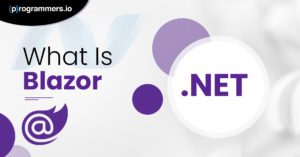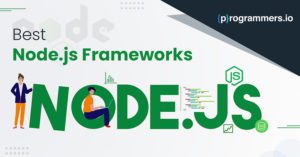Prioritizing user experience is the paramount concern for businesses engaged in web or mobile app development. Irrespective of the captivating attributes and functionalities embedded within your codebase, the foremost consideration should be accessibility for your users.
Streamlined website loading, intuitive navigation, and a seamless user journey define the core elements of an exemplary user experience. To achieve this, employing UI frameworks becomes pivotal as they streamline the creation of interactive and user-centric websites. Armed with our extensive web and mobile app development expertise, we have curated a selection of the best UI frameworks for developing web and mobile applications.
These UI frameworks will empower you to design contemporary, user-oriented websites and mobile applications that resonate with your target audience, as evidenced by the fact that renowned entities such as Facebook, Netflix, and Instagram have harnessed the prowess of these esteemed UI frameworks when designing their successful web applications.
So, continue reading to uncover insights into the top UI frameworks of 2024, which will align with your project’s unique requisites and allow you to build a stunning website or mobile app.
Understanding UI Frameworks
A User Interface (UI) framework constitutes a pre-built assembly of graphical user interface elements, encompassing buttons, dropdowns, checkboxes, and more. Developers leverage these ready-made components to fashion the front end of their web or mobile applications.
Essentially, a UI framework encompasses various tools, libraries, and templates designed to expedite the creation of visually appealing, responsive, and user-friendly application interfaces. UI frameworks particularly prove invaluable in mobile web development, wherein screen dimensions and layout constraints impose challenges upon interface design.
Through integrating a UI framework, developers can expeditiously devise responsive and user-friendly interfaces optimized for mobile devices. Noteworthy UI frameworks in this arena encompass React, Sencha Ext JS, Vue.JS, and Svelte. Incorporating these frameworks accelerates development cycles and fosters consistency across diverse projects.
The Best UI Frameworks for 2024
Each UI framework exhibits its distinct array of features, design elements, and user base. As such, dedicated developers are advised to select a framework aligned with their specific requirements and preferences. Nonetheless, this endeavor is accompanied by its own set of complexities. In light of this, we present a compilation of the best UI frameworks you can utilize in 2024:
1. React:
Distinguished by its simplicity, React emerges as an open-source framework initially conceived at Facebook to address challenges of code maintainability amid the perpetual integration of features. Standout features include its virtual Document Object Model (DOM), endowing it with exceptional functionality. React.js framework development is ideal for managing high-traffic scenarios, offering stability and reliability.
When to Use React:
React.js finds its forte in constructing user interfaces, particularly within single-page applications. Its robustness shines when creating interactive interfaces, minimizing development timelines through component reuse.
When not to use React:
React.js Development is different from the recommended course of action when grappling with limited familiarity with JavaScript. Moreover, for novice developers, the learning curve associated with JSX can prove steep.
2. Sencha Ext JS:
The amalgamation of Sencha Ext JS and Sencha Touch has resulted in a robust JavaScript framework primed to create cross-platform mobile applications. Esteemed for its high-performance UI components, including pivot grids, trees, lists, forms, HTML5 calendars, and D3 adapters, Sencha Ext JS empowers developers to attain optimal outcomes.
When to use Sencha Ext JS:
Sencha Ext JS serves well in scenarios demanding a steep learning curve, despite potential challenges such as bugs and crashes. Although it boasts a substantial fan base, alternatives offering easier learning curves and enhanced security are available.
When not to use Sencha Ext JS:
For those not well-versed in Sencha, alternative options like React Native or AngularJS might present more compelling solutions when constructing mobile applications.
3. Vue.JS:
Gaining rapid popularity, Vue.JS is celebrated for its simplicity and straightforwardness, effectively mitigating complexities often encountered by Angular developers. With advantages spanning reduced size and a component-based architecture, Vue.JS development also employs a two-way binding mechanism.
When to use Vue.JS Application:
Vue.JS is a recommended choice for projects necessitating flexible design structures. It seamlessly accommodates tasks ranging from web and mobile applications to progressive web applications, excelling in simple and dynamic contexts.
When not to use Vue.JS:
In scenarios where reliance on a robust support community is paramount, there may be better choices than Vue. JS. In addition, applications mandating stable components may encounter challenges due to Vue.JS’s historical component stability issues.
4. Svelte:
As the newest entrant among UI frameworks, Svelte distinguishes itself by shifting workloads from the browser to a compile step. That sets it apart from frameworks like React and Vue, wherein it synchronizes code to update the document object model in alignment with the application state.
When to use Svelte:
Svelte is most suited for compact app projects managed by smaller teams. However, its limited support community cautions against employing it for complex undertakings.
When not to use Svelte:
Larger projects must be better suited for Svelte, primarily due to the framework’s deficiency in tooling and community size. Challenges arising during development could potentially lack resolution due to the limited community.
5. Ember.js:
Introduced in 2011, Ember.js employs a component-based architecture and employs two-way data binding akin to Angular. It proficiently handles the demands posed by contemporary technologies, making it an ideal choice for complex web and mobile applications. However, its learning curve presents a notable challenge, as the framework’s rigid and conventional structure demands a significant commitment to learning.
When to use Ember.js Application:
Ember.js is well-suited for constructing modern applications featuring intricate user interfaces, exemplified by platforms like LinkedIn. Its robust routing mechanisms cater to diverse application states, rendering it suitable for extensive projects.
When not to use Ember.js:
Smaller development teams needing more experience and business logic may need help with Ember.js. The initial investment of time may be substantial, and alternative frameworks might better serve simpler Ajax functionalities and basic user interfaces.
6. Semantic-UI:
Despite its status as a newcomer, Semantic-UI has rapidly ascended to prominence within the framework landscape. Distinguished by its intuitive user interface and simplified functionality, it leverages natural language constructs to render code self-explanatory.
When to use Semantic-UI:
Semantic-UI excels in scenarios necessitating a lightweight and sleek user interface design, catering to an excellent user experience.
When not to use Semantic-UI:
Novice teams less versed in JavaScript might find Semantic-UI challenging, particularly in customizations that extend beyond ready-made functions.
FAQs for Best UI Frameworks in 2024
Here are some frequently asked questions (FAQs) related to UI frameworks for web development:
1. What is a UI framework, and why is it important for web development?
A UI (User Interface) framework is a pre-built collection of tools, libraries, and templates that simplifies creating visually appealing and user-friendly interfaces for web and mobile applications. It is crucial for web development because it streamlines development, ensures consistency in design, and accelerates the creation of interactive user interfaces.
2. What are the key benefits of using a UI framework?
Using a UI framework offers several benefits, including:
- Faster development: UI frameworks provide ready-made components, reducing the time needed to build interfaces from scratch.
- Consistency: They promote design consistency across different parts of your application.
- Responsiveness: UI frameworks often include responsive design elements, making it easier to create mobile-friendly interfaces.
- User-friendliness: They come with pre-designed, user-tested components, enhancing the overall user experience.
3. Which are the popular UI frameworks in 2024?
In 2024, some popular UI frameworks include React, Sencha Ext JS, Vue.JS, Svelte, Ember.js, and Semantic-UI. Each framework has unique features and use cases, making choosing the one that aligns with your project’s requirements important.
4. When should I choose React for my web development project?
React is an ideal choice when you want to build user interfaces, especially for single-page applications. It excels in scenarios where you need an interactive interface and want to save time by reusing components. However, if you lack experience in JavaScript, React may not be the best option due to its learning curve.
5. What are the advantages of using Sencha Ext JS?
Sencha Ext JS offers high-performance UI components suitable for cross-platform mobile application development. Its advantages include pivot grids, trees, forms, HTML5 calendars, and D3 adapters. However, it has a steep learning curve and may not be the best choice for developers new to Sencha.
Final Words
UI frameworks like Sencha Ext JS, React, and Semantic-UI offer diverse advantages encompassing rapid development, consistent branding, and cross-platform compatibility. Sencha Ext JS is a compelling choice due to its established track record and extensive toolset.
However, the best UI framework hinges upon project requisites, development team proficiency, and specific application scenarios. Selecting the best UI framework is pivotal to meeting user expectations and fashioning a robust and captivating web application.








